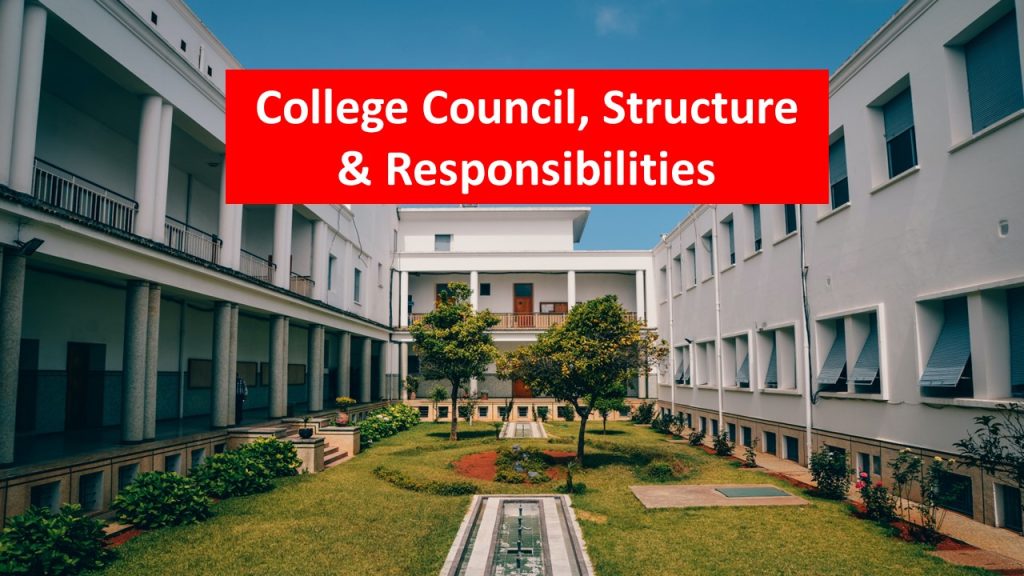The college council refers to a body consisting of college staff, administrative officers, philanthropists, and college students for the efficient working of educational institutions. The college council has the primary responsibility to work for the welfare of the institute and students’ interests. The college council has external and internal members and all stakeholders arrange meetings and take decisions for the management of different college causes. This will also increase the trust of the local community in public sector institutions.
Background of college council:
Autonomy of educational Institutions: In Punjab, Pakistan, the autonomy of colleges means that the educational institutions should be free in making decisions in academic, administrative, and indeed financial matters. The objective of autonomous colleges is to have greater academic and administrative freedom to design courses, syllabi, and assessments, selection of staff, and hiring of teaching professionals. The concept of autonomous educational institutions is a matter of debate for many decades. The higher education department of Pakistan looked for it and tried to practice it in institutions at different levels.
Board of Governors (BOG): The BOG concept was to make a governing body that supervises the management and administration of educational institutions. The BOG consists of members appointed by the government as well as stakeholders. The BOG is responsible for making policies, management of finance, and taking decisions for the welfare of the Institutions. This concept varies from province to province in Pakistan. In Punjab, the HED decided that colleges were granted autonomy in 2002. This autonomy means devolution of power plan by the forming BOGs which were given full control over finance, administration, and academic programs of the colleges.
Why BOGs and the Autonomy of the college failed?
Despite the planning and utilization of every kind of resource, the BOGs failed to deliver and cannot fulfill their objectives. The main reasons behind this were
- Lack of clear objectives: The BOGs did not have clear goals and objectives. This is the foundation of any institute. This results in the ultimate failure of the program.
- Resistance from existing staff: The BOGs did not clarify the service structure of the staff and due to this reason college staff was not willing to cooperate.
- Political interference: BOGs encourage political interference. The political involvement makes BOGs implement any change that was necessary for the growth of the institute.
- Poor resources: Colleges were given full control over the finance but a lack of sufficient resources resulted in the creation of problems. These problems make it difficult to manage the salaries of the staff and maintain basic facilities.
- Poor training: The college administration and the staff was not trained adequately. This results in confusion and inefficiencies in management.
- Poor communication: BOGs did not maintain communication between all stakeholders such as staff, students, and parents. This gap ultimately results in misconceptions and the failure of the program.
In short BOGs in the colleges of Punjab have very complicated reasons and are multifactorial. We will discuss this topic separately in detail.
College council Notification:
College council was operative in colleges of Punjab vide notification No. SO (A-1) 1-47/2010 (P), Dated November 29, 2010, by the Punjab Higher Education Department
Structure of College council:
External Members
| 1 | Principal |
| 2 | Vice-Principal |
| 3 | Professor |
| 4 | Associate Professor |
| 5 | Assistant Professor |
| 6 | Lecturer |
| 7 | Intermediate student |
| 8 | Degree Student |
| 9 | Postgraduate Student |
| 10 | Parent – 1 |
| 11 | Parent -2 |
Internal Members:
| 1 | Representative of commissioner |
| 2 | Representative of DCs |
| 3 | Philanthropist |
| 4 | Philanthropist |
| 5 | Respective MPA |
| 6 | One Engineer |
Powers of College Council:
- A 50 percent quorum is compulsory to take any initiative under the power of the college council.
- To establish rules and regulations for the efficient and effective management of the college.
- To hold, control, and manage college property.
- Proper utilization of college funds (except depository funds of government treasury).
- Effective utilization of the maintenance and repair budget of the college.
- Implementation of development plans in the college by the public and private sector support.
- The re-appropriation of funds.
- To take decisions about the student’s affairs and welfare


Thanks-a-mundo for the blog.Really thank you! Awesome.
Say, you got a nice blog.Thanks Again. Keep writing.